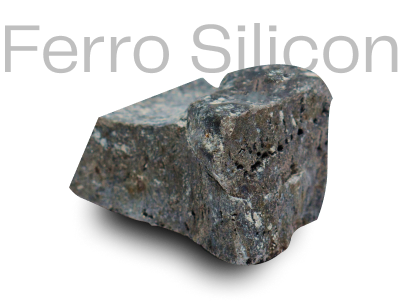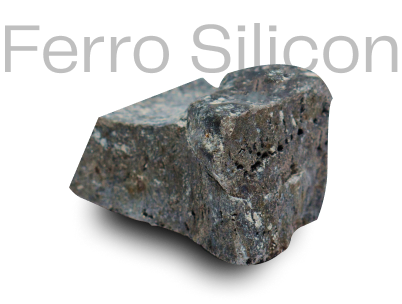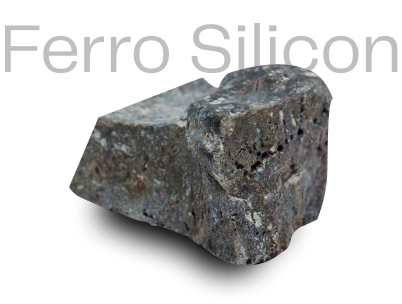

Ferrosilicon (FeSi) or ferro silicon is a ferro alloy composed of iron and silicon. Ferrosilicon is a ferro silicon alloy made from coke, steel scraps, and quartz (or silica) as raw materials and smelted in an electric furnace. It is widely used in the steel industry, foundry industry and other industrial production.
As a professional ferro silicon manufacturer, we mainly supply 75 ferrosilicon, 72 ferrosilicon and 70 ferrosilicon. The quality of ferrosilicon is guaranteed and the delivery is timely. We can provide ferrosilicon natural blocks, ferrosilicon lumps standard, ferrosilicon granules, ferrosilicon powders, etc. The available particle size specifications are 0-1mm, 1-3mm, 3-10mm, 10-50mm, and 50-100mm, with custom sizes available to meet specific customer requirements.HONGSHUN is one of the largest suppliers of premium-grade ferrosilicon ferroalloys worldwide, and we are here to assist you in identifying the best product for your application.

| Normal Grade | Composition |
| FeSi75 | Si:75%Min C:0.2%Max Al:0.8-1.5Max P:0.03%Max S:0.03%Max |
| FeSi72 | Si:72%Min C:0.2%Max Al:2.0%Max P:0.03%Max S:0.03%Max |
| FeSi70 | Si:70%Min C:0.2%Max Al:2.0%Max P:0.03%Max S:0.03%Max |
| FeSi65 | Si:65%Min C:0.2%Max Al:2.0%Max P:0.04%Max S:0.03%Max |
| Low Al Grade 75%FeSi | Si:75% C:0.2% AL:0.2% P:0.035% S:0.02% |
Trustable ferroalloy factory – Time International

Ferrosilicon is often categorized according to the levels of various minor components, depending on the application requirements. These categories include:
Low-carbon ferrosilicon and ultra-low-carbon ferrosilicon: Used to avoid reintroducing carbon during the manufacture of stainless steel and electrical steel.
Low-titanium (high-purity) ferrosilicon: Used to avoid TiN and TiC inclusions in electrical steel and some special steels.
Low-aluminum ferrosilicon: Used to avoid the formation of hard Al2O3 and Al2O3–CaO inclusions in a range of steel types.
Special ferrosilicon: A general term that covers a range of tailor-made products containing other alloying elements.
Appearance: The appearance of ferrosilicon is metallic bread color, without powder or slag.
Chemical composition: In addition to Si and Fe, ferrosilicon also contains Mn, Cr, P, S, C, and other elements.
Melting point: The melting point of 72#-80# ferrosilicon is 1290℃-1360℃. 75# ferro silicon melting point 1300℃.
Density: The density of ferrosilicon depends on the silicon content in ferrosilicon, and its density decreases as the silicon content in ferrosilicon alloy increases. The density of 75# ferrosilicon is 3270kg/m.
Ferrosilicon is an essential deoxidizer in the steelmaking industry. Adding a certain amount of silicon to steel can significantly improve the strength, hardness and elasticity of the steel. In steelmaking, ferrosilicon is used for precipitation deoxidation and diffusion deoxidation. Brick iron is also used as an alloying agent in steelmaking.
Used as inoculant and nodulizer in the cast iron industry. In the production of ductile iron, ferrosilicon is an important inoculant (helping to precipitate graphite) and nodularizing agent.
Used as a reducing agent in ferroalloy production. Not only is the chemical affinity between silicon and oxygen very high, but the carbon content of high-silicon ferrosilicon is very low. Therefore, high-silicon ferrosilicon (or silicon alloy) is a commonly used reducing agent in the ferroalloy industry when producing low-carbon ferroalloys.
Ferrosilicon 75 is often used in the high-temperature smelting process of metallic magnesium in the Pidgeon process to replace the magnesium in CaO.MgO. Every ton of metallic magnesium produced consumes about 1.2 tons of ferrosilicon. For metallic magnesium, Production plays a big role.
Use in other ways. Ground or atomized ferrosilicon powder can be used as a suspended phase in the mineral processing industry.
It can be used as a coating for welding rods in the welding rod manufacturing industry. High-silicon ferrosilicon is used in the chemical industry to make products such as silicone.
Deoxidizer: Ferro silicon is utilized in the steelmaking industry as both a precipitation deoxidizer and a diffusion deoxidizer.
Reducing Agent: High silicon ferro silicon or siliceous alloys act as reducing agents in the production of low-carbon iron alloys within the ferroalloy industry.
Alloying Agent: Ferro silicon serves as an alloying agent for various types of steel, including low-alloy structural steel, composite steel, spring steel, bearing steel, heat-resistant steel, and electric silicon steel. It is also used in the production of single crystal silicon and the preparation of non-ferrous metal alloys.
Inoculant: In cast iron production, adding ferro silicon can serve as an inoculant for nodular cast iron. This prevents the formation of carbides, promotes the precipitation and spheroidization of graphite, and thereby enhances the properties of the cast iron.
Coating: Ferro silicon powder is used as a suspension phase in the beneficiation industry and as a coating for welding rods in the welding rod manufacturing industry.
The preparation method of ferrosilicon is generally completed through the smelting process. The main steps are as follows:
Raw material preparation: Prepare appropriate proportions of raw materials rich in silicon and iron, such as high-quality iron ore, quartz ore and coke.
Refining: Put the raw materials into a high-temperature furnace for reduction and smelting. At appropriate temperatures, desulfurizers such as limestone and suitable fluxes are added to remove impurities and obtain the required ferrosilicon alloy.
For ferrosilicon safety information, here are some suggestions:
Ferrosilicon is a stable compound and generally has no direct toxicity to the human body. However, at high temperatures, ferrosilicon can produce harmful gases such as silicon dioxide and carbon monoxide. Therefore, when handling ferrosilicon, you need to pay attention to ventilation conditions to avoid inhaling harmful gases.
When handling ferrosilicon, appropriate personal protective equipment, such as glasses, gloves and protective masks, should be worn to prevent direct contact and inhalation of ferrosilicon powder.
Ferrosilicon should avoid contact with harmful substances such as water, acid and alkali during storage and transportation to prevent dangerous reactions.
Ferrosilicon waste should be disposed of following relevant local regulations to avoid harm to the environment.

Copyright © 2024 TIME INTERNATIONAL DMCC All Rights Reserved. XML
 Scan
Scan